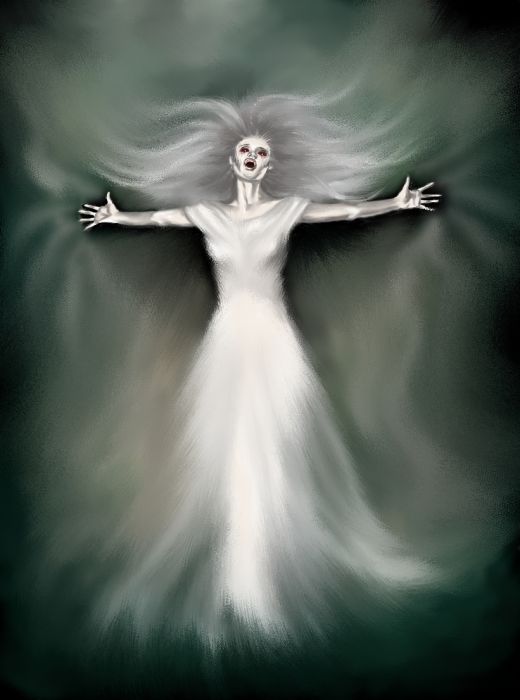

The practice became associated with banshees, and many accounts claim the creature signifies death through loud weeping or anguished cries. 'Bunworth Banshee' illustration in 'Fairy Legends and Traditions of the South of Ireland' by Thomas Crofton Croker, 1825 (Image: Public Domain) Funeral rituals would include a 'keening woman' who would wail-sing words commemorating the dead. In Celtic Ireland (and Scotland), mourning traditions included a vocal lament for the dead now referred to as 'keening' - from the Irish 'caoin', meaning to cry or weep. Perhaps this is because they are so closely associated with death and mourning. Though they are fairies by name, some believed them to be the spirits of women who had tragically died - through the likes of murder or childbirth. They are often cloaked and wearing all black or all white, giving them a ghostly appearance, and are sometimes seen combing their hair.

In most accounts, banshees take the form of an old or haggard woman with long, usually silver or white hair. The shorter height again links them to the fairy world. Some accounts describe banshees as unnaturally tall, while others claim them to be anywhere between one and four feet. Yet all over Ireland, the banshee is known as a female spirit or fairy who foretells (or brings) death. So what actually is the Irish mythological creature featured in the title of Oscar-nominated ' The Banshees of Inisherin'? The word 'banshee' is an Anglicisation of the Irish 'bean sí' which means 'fairy woman' or 'woman of the fairy mound'.ĭescriptions of the banshee vary by regional folklore, in terms of both physical appearance and the creature's practices. Colin Farrell and Brendan Gleeson in The Banshees of Inisherin


 0 kommentar(er)
0 kommentar(er)
